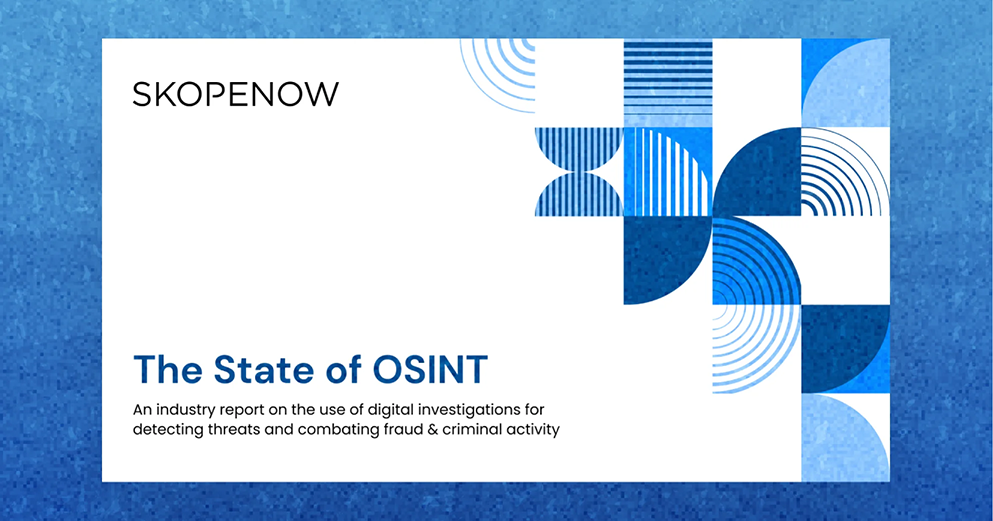October 07, 2020
Knowledge is Power: OSINT and the Art of Law

Laura O'Driscoll
Content Manager
In conflict environments, characterized by uncertainty and complexity, knowledge is power. Successful campaign strategy depends on understanding, controlling, and dominating the environment through actionable intelligence.
Complex litigation, like warfare, is about strategic conflict resolution. Its objective is to achieve a costless victory where possible, or otherwise reduce the cost of defeat. The decline in case disposition by trial reflects this reality. In 2016, federal courts conducted half as many civil trials as they did in 1962, even whilst disposing of over five times as many civil cases. Trial rates are even lower at the state level. It’s part of a long-term shift towards alternative dispute resolution or negotiated settlement that aims to limit losses on multiple fronts: time, money, morale, and reputation.
Multifactorial success requires skillful application of intelligence to action: mastery not just of the facts and the law, but of how and when to use them to strategic advantage. It’s less about head-to-head courtroom battle and more about sophisticated campaign strategy. Intelligence generates clarity, maneuverability, and adaptability.
Litigation strategists depend on actionable intelligence to make critical decisions, gain and maintain control of the action. They need to know when and where to apply pressure, the point at which their opponent is most likely to settle, how and when to disclose information to their greatest advantage, and the opponent’s greatest disadvantage. This means scrutinizing the factual landscape, in granular detail and broader context; identifying capabilities and vulnerabilities on both sides, and applying strength to weakness; and understanding the opponent’s plans, motivations, and intentions. It means building a powerful arsenal of court-ready evidence, circumstantial as well as documentary and demonstrative.
Sun Tzu’s Art of War famously asserted the primacy of intelligence in decisive military victory. Fortunately, in the context of modern litigation, it’s not necessary to recruit an army of spies or apply high-risk covert strategies. OSINT is a powerful, legal, low-risk, and high-reward source of actionable intelligence to those equipped with the right tools and analytical capability to use it effectively.
Hard Facts: The Devil in the Detail
In complex litigation, the facts themselves are rarely simple. Advanced intelligence collection and analysis can identify relevant factual details capable of derailing an apparently straightforward case. Insurance claims or breach of contract cases, for example, depend on detailed factual accounts and arguments. Arguing a small but relevant technical point or discrepancy can create significant doubt, push the balance towards settlement, or even invalidate the claim.
Where detail creates room for maneuver, context provides foresight. Information regarding the scale, nature, and status of an opponent’s resources, for example, has significant implications for both sides. The opponent’s approach to risk and reward will depend greatly on the resources at their disposal. But the discovery that they don’t have the capital to meet any settlement, judgment or costs order means there is little point in winning a decisive legal victory if all that you will be left with is the opponent’s “scorched earth”.
Documentary and Demonstrative Evidence: A PDF is worth a thousand words
Where a factual detail can open a crack in the door, a demonstrative exhibit can blow out the hinges. A photograph drawn from the subject’s social media; an internal document, email, or bank statement sourced from the “deep web” infrastructure of a company’s website; an illustrative court record or media report; demonstrative and documentary evidence can be a powerful short-cut to capturing and asserting narrative control.
Such evidence is, of course, subject to issues of admissibility and relevance. Sourcing it through covert, illicit means may well constrain or prevent use. Using legal, open source intelligence tools and methods will legitimize your evidence for action, allowing you to fully exploit its potential.
Link analysis: Depth, Breadth and Targeting Power
The facts of the case should be where strategy starts - not where it ends. An opponent’s capacity to sustain the campaign is as much situational as it is material. Identifying their key networks and associations will allow you to pin-point critical “centers of gravity”: individuals, entities or objects from which they draw power, maneuverability, or resilience. These can be diverse, ranging from “proxy” associates to facilitative corporate structures, reputational standing in a given market, or the ability to travel to certain jurisdictions.
Targeting centers of gravity is an effective way to concentrate resources and reduce the length and cost of your campaign. Moreover, intelligence grows exponentially as data points multiply: the more you know, the more you can find out. Investigation into key associates or entities linked to the subject may shed light on aspects of their situation that were not otherwise apparent.
Behavioural analytics: Plans, Motivations & Intentions
Beyond the material and the circumstantial is the psychological aspect of the campaign. Behavioral patterns can tell you a lot about your opponent’s likely tactics and strategy. Some will be conflict-averse whilst others will thrive on the fight. Some use litigation as a bulldozing tactic whilst others use it as a diplomatic tool. Someone who values moral principles over financial considerations may take a strategy that appears counter to the resources at their disposal. Behavior - like history - has a tendency to repeat itself.
Advanced technology can automatically identify key behaviors through natural language processing and computer vision. Analysis of patterns over time can shed further light on the opponent’s litigation history, their counsel’s signature tactics, and trial experience. Trends in their approach to conflict will give you a roadmap from which to predict current strategy, whilst anomalies will prepare you for areas of potential volatility. Awareness of how they react to opposition tactics will help you tailor your strategy towards provoking the desired response and iron out potential false moves.
Real-time monitoring: Expect the Unexpected
Intelligence doesn’t stop when the action starts. Groundwork tells you what you have in your toolbox: continued monitoring and analysis prepares you to use it at the right time, with confidence and agility. Intelligence and action should engage in a virtuous circle allowing strategy to be both responsive and proactive.
In order to anticipate and respond effectively to sudden developments or surprise tactics, you need an ongoing open source intelligence capability that allows you to remain on top of the subject and their network. It should alert you to critical, actionable developments without swamping you with unnecessary information. In litigation as in life, timing is everything.
Tying it all together: the Art of Law
The art of law, like the art of war, requires tactical deception and misdirection. Integral to an effective strategy is the ability to maintain stealth and anonymity: to see your opponent in granular detail but remain a blur to them; to appear to know less than you do; to feign one move whilst preparing another; in short, to maintain the element of surprise. Invasive or clumsy intelligence activities that alert the opponent to your tactics, capabilities, and vulnerabilities can undermine an otherwise successful campaign.
A sophisticated intelligence operation should be discrete, efficient, comprehensive yet targeted to your strategic aims. Skopenow streamlines the digital intelligence-gathering process to deliver the actionable intelligence you need, when you need it, giving you the strategic edge in complex litigation and dispute resolution. It works anonymously to build a detailed factual landscape around the subject, identify and archive demonstrative and documentary evidence, map associations and draw non-obvious connections, detect actionable behaviors, and monitor critical developments. Digital records and metadata are automatically collated into fully compliant, court-ready reports to drive a proactive and responsive litigation strategy.


